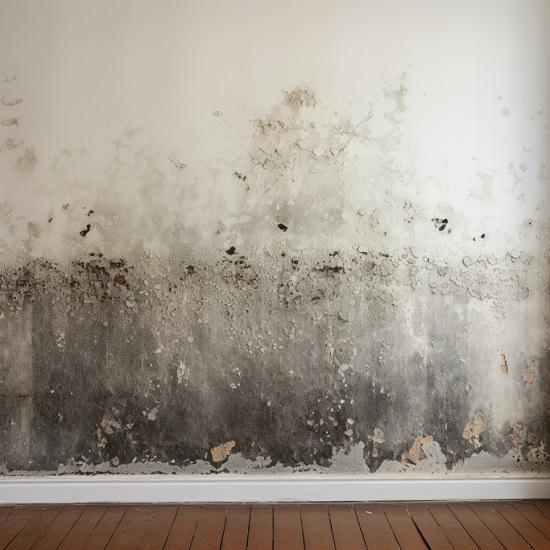Crafting an In-depth Post Mold Remediation Report
Wiki Article
Specialist Tips for Article Mold And Mildew Remediation Success
In the realm of mold removal, efficiently eradicating mold is just half the battle; the real challenge lies in stopping its reappearance. By adhering to skilled ideas and best techniques, individuals can guard their areas versus mold resurgence and keep a healthy and balanced interior atmosphere.
Screen Humidity Degrees Consistently
Normal surveillance of moisture levels is important in making certain the efficiency of article mold removal initiatives. After completing mold and mildew removal procedures, preserving optimal humidity degrees is crucial to avoid mold re-growth and make sure a healthy interior atmosphere. Monitoring moisture degrees enables very early discovery of any type of spikes or changes that can possibly lead to mold revival. High moisture levels above 60% create a helpful setting for mold and mildew to flourish, making normal keeping an eye on a proactive action to avoid any kind of future mold concerns - After mold remediation.Additionally, developing a regular timetable for moisture checks, particularly in risky areas such as cellars, washrooms, and cooking areas, is a positive approach to mold prevention. By regularly checking humidity levels, residential or commercial property owners can efficiently reduce the danger of mold and mildew reoccurrence and maintain a healthy and balanced indoor environment post-remediation.
Conduct Thorough Inspections Post-Remediation
Adhering to the conclusion of mold and mildew remediation procedures, it is imperative to carry out comprehensive inspections to confirm the efficiency of the removal process. These post-remediation assessments are crucial in ensuring that the mold and mildew problem has actually been efficiently attended to which there is no reappearance or staying mold development. Evaluations ought to be lugged out by certified experts that have expertise in recognizing mold and mildew and assessing indoor air top quality.Throughout these examinations, different techniques such as aesthetic assessments, air tasting, and surface sampling may be employed to completely examine the remediated areas. Visual assessments entail a thorough assessment of the facilities to look for any visible signs of mold and mildew development or water damages. Air tasting assists in determining the airborne mold spore degrees, while surface tasting can spot mold and mildew particles on surface areas.
Implement Correct Ventilation Approaches
After guaranteeing the effectiveness of the mold and mildew removal process with comprehensive assessments, the next important step is to concentrate on applying correct ventilation approaches. Ample ventilation is essential in preventing mold and mildew reoccurrence by controlling moisture degrees and promoting air circulation.
Appropriate ventilation not only help in avoiding mold growth but also contributes to the general wellness and comfort of occupants. By ensuring ample ventilation throughout the residential or commercial property, you can lower the risk of mold regrowth and develop a much healthier living atmosphere.

Usage Mold-Resistant Materials for Repair Works
To enhance the long-term effectiveness of mold and mildew remediation efforts, integrating mold-resistant materials for fixings is essential in alleviating the threat of future mold and mildew growth. Mold-resistant materials are created to hold up against wetness and inhibit mold growth, making them a necessary option for areas vulnerable to wetness and moisture. When fixing locations influenced by mold and mildew, utilizing materials such as mold-resistant drywall, mold-resistant paints, and mold-resistant caulking can aid prevent mold and mildew reappearance.Mold-resistant drywall is an exceptional alternative to typical drywall in areas like shower rooms and basements where wetness levels are greater. When subjected to damp problems, this type of drywall has an unique finish that stands up to mold development also. Furthermore, utilizing mold-resistant paints including antimicrobial agents can additionally inhibit mold development on ceilings and walls.
In locations where moisture is typical, such as shower rooms and kitchen areas, making use of mold-resistant caulking around home windows, bathtubs, and sinks can assist my latest blog post seal out water and avoid mold and mildew from taking hold in fractures and holes. By spending in these mold-resistant materials throughout repair work post-remediation, you can significantly decrease the probability of future mold issues and preserve a healthier interior environment.
Maintain Sanitation and Address Water Issues
After mold remediation, it is crucial to keep a clean atmosphere you could check here to avoid the regrowth of mold. Leaks, water breach, or high humidity levels can create the best breeding ground for mold and mildew, so it is imperative to deal with any water-related troubles quickly.To preserve tidiness, think about utilizing HEPA filters in vacuum cleaners and air purifiers to catch mold spores and avoid their circulation in the air. Guaranteeing proper ventilation in locations vulnerable to moisture build-up, such as bathrooms and kitchen areas, can aid maintain humidity levels in check. By staying watchful regarding cleanliness and addressing water issues quickly, you can effectively prevent mold reinfestation and keep a healthy interior environment.
Final Thought

In the world of mold remediation, efficiently eliminating mold and find mildew is just half the fight; the true difficulty lies in preventing its reappearance. After finishing mold remediation treatments, preserving optimum moisture levels is crucial to protect against mold and mildew re-growth and make sure a healthy interior environment. High humidity degrees over 60% produce a favorable atmosphere for mold to prosper, making regular keeping an eye on an aggressive action to avoid any type of future mold concerns.
To enhance the lasting effectiveness of mold removal initiatives, integrating mold-resistant products for repairs is critical in mitigating the danger of future mold development. After mold removal, it is critical to maintain a clean atmosphere to protect against the regrowth of mold and mildew.
Report this wiki page